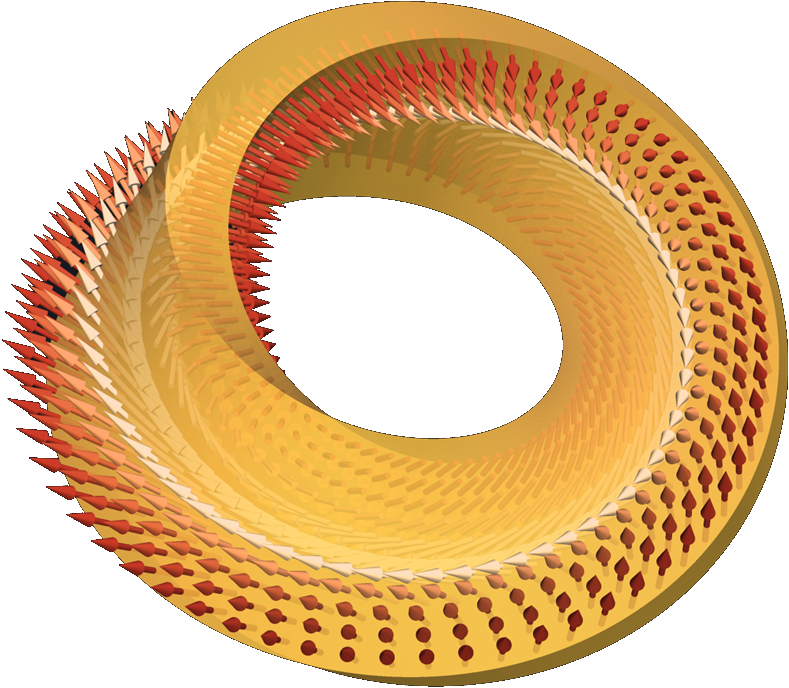Speaker
Description
Micromagnetic simulations have reached a high degree of reliability and accuracy over the past years, which allows to ascribe to them predictive power for the magnetic properties of nanostructures. To investigate magnetic processes unfolding as a result of surface curvature, simulations based on finite elements are particularly suited due to their ability to approximate arbitrary geometries. A few years ago, such simulations have revealed extraordinary features regarding the dynamics of vortex-type domain walls in cylindrical soft-magnetic nanotubes with domains oriented along the symmetry axis [1], [2]. The simulations predicted that in these systems the stability and the mobility of field-driven domain walls depend on their chirality, defined by combining the circulation of the vortex in the domain wall with the propagation direction along the tube axis. In particular, domain walls with suitable chirality can attain very high dynamic stability and thereby reach velocities which are significantly larger than the limit that is usually reached by the Walker breakdown [2]. Simulations, supported by analytic studies, also revealed a further type of chiral asymmetry (or non-reciprocity) regarding the propagation of spin waves in magnetic nanotubes with azimuthal magnetization [3], [4].
Both effects, the spin-wave non-reciprocity and the stability of domain walls with specific chirality, are known phenomena in the case of flat thin films of magnetic material with intrinsic Dzyaloshinskii-Moriya interaction (DMI). The observation of these magnetochiral effects in ordinary ferromagnetic materials with curved geometries suggests an analogy between surface curvature and intrinsic DMI [5]. Such a link was also discussed in a number of analytic and numerical studies [6], [7]. In this talk I will review some of these previous findings and present further simulation studies on the dynamics of micromagetic structures on curved surfaces, in ferromagnetic materials with and without intrinsic DMI.
[1] M. Yan, C. Andreas, A. Kákay, F. García-Sánchez, and R. Hertel, “Chiral symmetry breaking and pair-creation mediated Walker breakdown in magnetic nanotubes,” Appl. Phys. Lett. 100, 25, 252401 (2012)
[2] M. Yan, C. Andreas, A. Kákay, F. García-Sánchez, and R. Hertel, “Fast domain wall dynamics in magnetic nanotubes: Suppression of Walker breakdown and Cherenkov-like spin wave emission,” Appl. Phys. Lett. 99, 12, 122505 (2011)
[3] J. A. Otálora, M. Yan, H. Schultheiss, R. Hertel, and A. Kákay, “Curvature-Induced Asymmetric Spin-Wave Dispersion,” Phys. Rev. Lett., 117, 22, 227203 (2016)
[4] J. A. Otálora, M. Yan, H. Schultheiss, R. Hertel, and A. Kákay, “Asymmetric spin-wave dispersion in ferromagnetic nanotubes induced by surface curvature,” Phys. Rev. B, 95, 18, 184415 (2017)
[5] R. Hertel, “Curvature-Induced Magnetochirality,” SPIN, 3, 3, 1340009 (2013)
[6] Y. Gaididei, V. P. Kravchuk, and D. D. Sheka, “Curvature Effects in Thin Magnetic Shells,” Phys. Rev. Lett. 112, 25, 257203 (2014).
[7] V. P. Kravchuk et al., “Topologically stable magnetization states on a spherical shell: Curvature-stabilized skyrmions, Phys. Rev. B. 94, 14, 144402 (2016)

